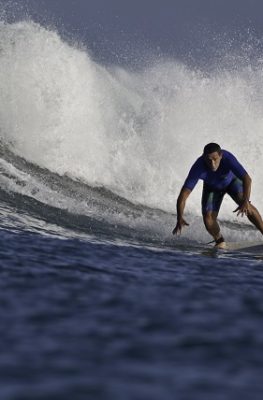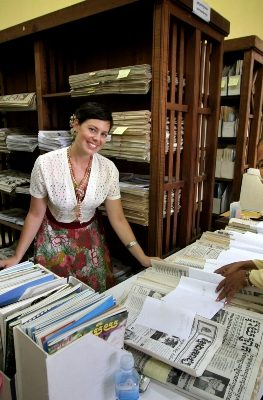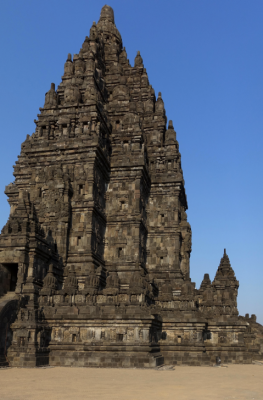Published on June 15, 2014
A new Champion emerged in Stage 7 as Australian cyclist, Brenton Jones, from the Avanti Racing Team (ART) became first to cross the finish line, having recorded the fastest time of 4:00:02.
91 athletes from 18 different teams continued the battle of speed in the Tour de Singkarak in its 7th and longest stage , Friday, 13 June, which covered a total distance of 167.5 kilometer from Silokek, Sijunjung to the municipal building of Dharmasraya Regency. This stage was dominated by long flat tracks and some “wavy” roads and did not feature many climbs.
Second to reach the Finish was Mehdi Sorabi from Tabriz Petrochemical Tea, (TPT) Iran, followed by Mark Julius Borderos from Team 7 Eleven Roadbike (T7E) of the Philippines in 3rd place.
In the overall general standings, Iranian cyclist Amir Zargari (PKY) continued to keep a firm grip of the top position having accumulated a total time of 21:23:18, earning him the yellow jersey for the 5th time. Zargari’s teammate, Rahim Emami still lurked behind him in 2nd place with the total time of 21:24:45, followed by Hossein Alizadeh (TSR) in 3rd place with a total time of 21:25:32.
In this stage, the title of the King of Mountain went to Iranian cyclist Ramin Mehrbaniazar (PKY) who managed to collect 26 points, which earned him the Polka dot Jersey for the 5th consecutive time.
In the ASEAN Category, Dadi Suryadi from Pegasus Continental Team (PCT) also maintained his domination in the top of the general standings with total time of 21:29:56. Second place still belonged to Bambang Suryadi from Indonesia National Team with total time of 21:33:42, while Boots Ryan Cayubit from Team 7 Eleven Roadbike (T7E) Philippines followed in 3rd place with total time of 21:34:42.
The Dharmasraya regency is a newly established regency, and, therefore, one of the youngest in the West Sumatra Province.
It is located in the south east of the province with nearest city the town of Sawahlunto.
But in fact, Dharmasraya is home to some of the oldest historical legacies of the Malay Kingdom. Here are found a number of historical remains in the form of temples, artifacts, mosques, Malay Kingdom’s royal tombs, and also a Minangkabau Grand House (Rumah Gadang).
The diverse artifacts of Hindu-Buddhist and Islamic cultures in Dharmasraya truly hold immense potential to develop this region as a tourists attraction.
The regency was once the site of a powerful Malay Kingdom which had its capital in the Pulau Punung area. The name Dharmasraya itself is said to be derived from a manuscript known as the Padang Roco Tablet which mentions that Dharmasraya was the seat of a Malay Kingdom that emerged at the fall of the great Srivijaya kingdom on Sumatra by the end of the 13th to14th century.
It is believed that this Kingdom stretched from Peninsular Malaya to include large parts of Sumatra, as mentioned the Grahi Tablet found in Chaiya, South Thailand, as also mentioned in Chinese manuscripts known as Zhufan Zhi dated the year 1225.
These indicated that the Malay Kingdom at Dharmasraya also cooperated with the Singhasari (Singosari) Kingdom on Java. Other historical records from the book of Nagarakertgama suggest that Dharmasraya was a vassal state of the great Majapahit Kingdom whose seat was at Trowulan in East Java.






